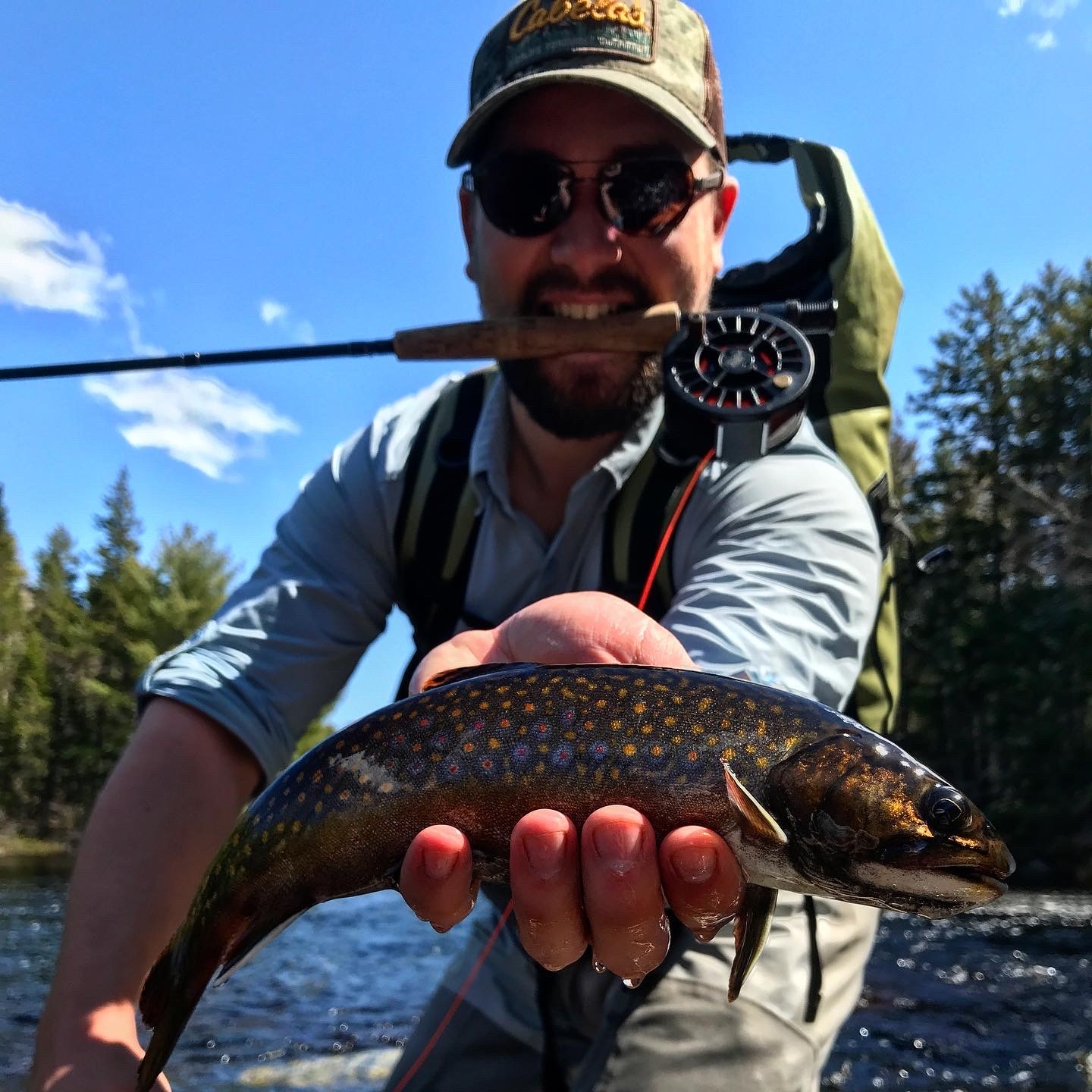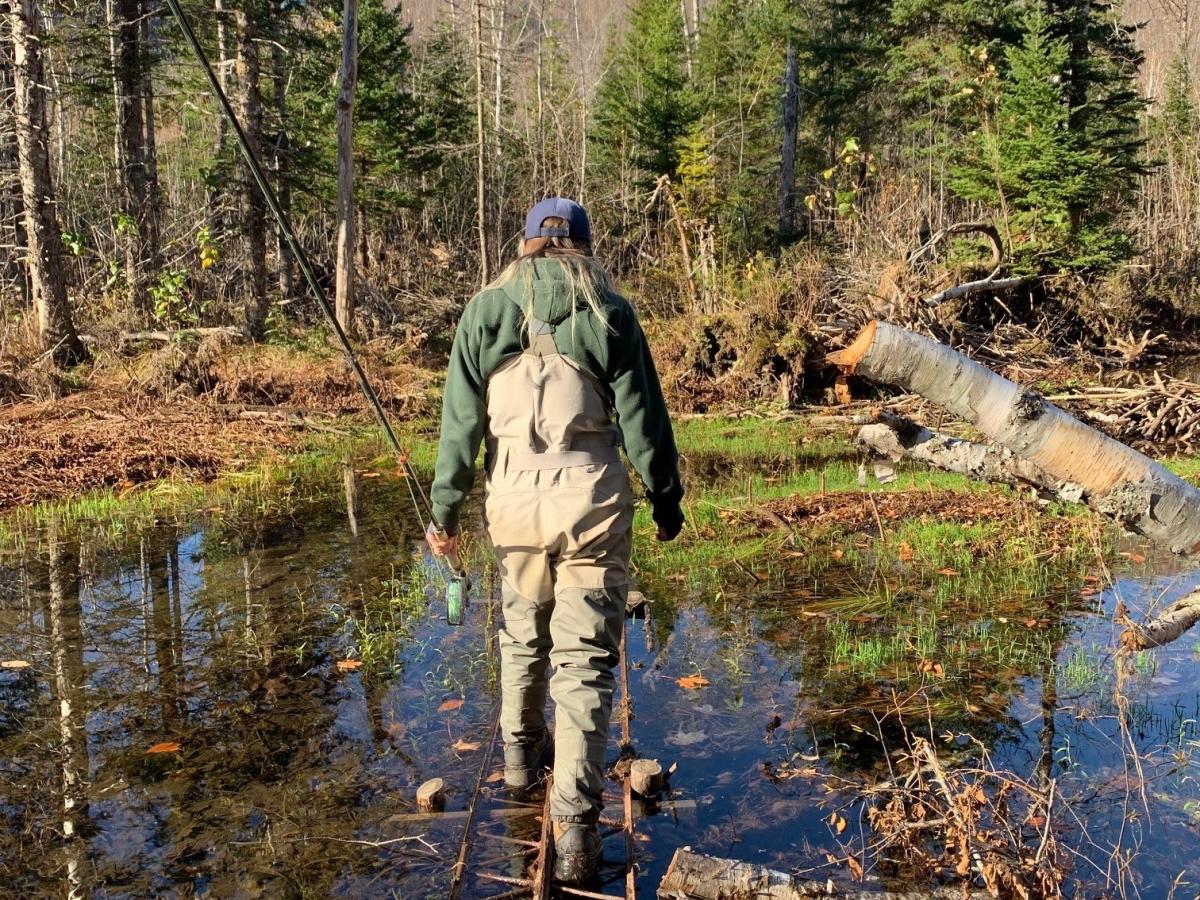
Backcountry Brookies
How to Beat Angling Pressure to Find Brook Trout
by Matt Balcombe
It’s a question you see constantly on online message boards and fishing Facebook pages, “Hey, not looking for anyone’s secret spots, but does anyone know where I can find some brookies close to the city?” More often than not, these posts are met with silence. And perhaps for good reason.
Brook trout are a sensitive fish, in order to flourish they need the right combination of water temperature, pH, a diverse habitat with structure to provide protection, current which provides a steady flow of food and oxygenation, tree cover to protect from overhead predators and shaded streams and pools to protect from the hot summer sun. But perhaps the biggest factor in finding healthy populations of brook trout is an absence of angling pressure, and this is not something easily found near urban centers.
When I started my guiding business in 2019, my goal was to provide clients with an authentic backcountry, brook trout fishing experience. In order to have a viable number of clients each season I knew I would need to be close to the city to take advantage of the numbers of tourists who flock to Nova Scotia’s capital every year. But operating so close to the city presents a separate set of challenges in finding high quality fishing destinations, which are still reasonably accessible for day trips from the urban center.
In order to overcome this I spent the whole previous spring and summer, and the previous winter scouting potential fishing locations. I learned many lessons on how to find healthy trout populations when most areas within an hour of the city experience heavy fishing pressure. These are some of my biggest takeaways;
Gates;
Some folks cringe at the sight of them, but to the diehard brook trout angler a gate can mean access to un-pressured waters (if you’re willing to burn a bit of boot leather to get there). In my experience for every one angler who makes the hike past a closed gate there are nine who pull a u-turn and head on. Of course it’s important to be mindful of land ownership in these situations, at least here in Nova Scotia anyone can legally access a body of water on foot for the purpose of fishing. Still, it’s always good to check and ask permission when possible before accessing private land.
Lack of road and trail access;
This is where an online mapping tool like Google Earth or OnX really comes in handy. Spend some time scrolling and target larger watersheds with the features noted above, look for multiple transitions between streams and pools and areas with thick tree cover and vegetation. Next, eliminate those stretches within 500m of road access points or well known trails. Then hit the field and ground truth the remaining stretches, put in enough time and you will be rewarded with your very own bonafide honey hole.
Canoe Access/Portages;
Now we’re jumping up to a new level of commitment to backcountry angling, but it’s well worth it. Portaging, meaning to carry one’s boat and equipment from one body of water to another, or around an obstacle, is one of the best ways to avoid angling pressure.
There are obvious logistical restrictions keeping those far back lake and river systems a mystery to most; you’ll need a vessel suitable to be carried on your back such as a canoe, and a well thought out system of fishing and camping equipment that can be transported without being too heavy or cumbersome.
Then there is a simple matter of the effort required to access these remote water bodies. It stands that the harder a place is to access, the fewer people will try to reach it. Portaging is not easy. With canoes weighing upwards of 75lbs, plus food and gear for extended trips in combination with down trees, thick brush and grown in, unmarked or absent trails, every step can feel like an impossible feat. But the reward is great, many times the result is exclusive access to hundreds of hectares of prime fishing territory.
Whitewater and Rapids;
This is the final hurdle in my list of barriers to backcountry fishing access. It is perhaps the most daunting, and rightfully so. Running whitewater is downright dangerous and requires careful planning, skill, the right equipment and backup should things go wrong.
Rapids occur on stretches of river with large elevation drops and/or constrictions causing an increase in the speed of the current. They are full of hazards such as boulders, downed trees (sweepers), and strainers where the current can pull a person or their canoe under an object. If you want to gain access to more fishing territory by traversing whitewater you’ll need hands on instruction from a qualified mentor.
The right equipment is important as well. A canoe fitted with features like a spray deck or airbags can prevent swamping, and an appropriately shaped hull that maximizes maneuverability helps to avoid obstacles. A whitewater canoe also needs to be durable enough to handle impacts of rocks which will inevitably occur. A whitewater canoe should also be fitted with some accessories to help you should things go south like a throw bag, bow and stern lines.
Prior to running any rapid, careful scouting is required. You need a plan in place prior to making your approach. Every paddle stroke, turn, and eddy needs to be thought out ahead of time so the run can be executed safely. You also need the knowledge and experience to recover when things don’t go according to the plan.
All these factors mean that few individuals will access stretches of water protected by these intimidating, roaring barriers but if you put in the effort to develop the right skill set it can pay off major dividends in fishing access.
Conclusion;
So there you have it, if you want to target large populations of trophy brook trout, you’re going to need to travel where others won’t. Developing the skills and putting in the work to overcome the barriers mentioned previously will separate you from the crowd, get you away from angling pressure and deliver the results you are looking for.

